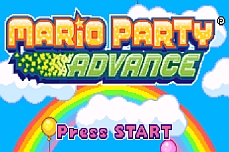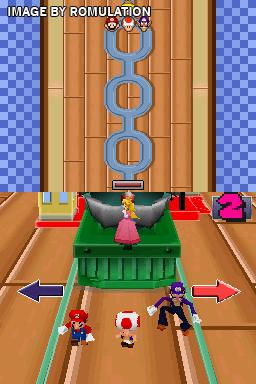
Once installed, the link cable connector on the Game Boy Advance is obstructed, but a pass-through connection on the e-Reader allows link-up features to be used.

Electronically, the e-Reader is compatible with any console that supports Game Boy Advance games, however it may be mechanically incompatible with some systems (it simply does not fit), and the ability to link consoles may not be available. The end of the e-Reader sticks out from the Game Boy Advance unit to provide a slot to scan the e-Reader Cards. The e-Reader plugs into the cartridge slot of the Game Boy Advance like a regular game would. The e-Reader plugged into a Game Boy Advance SP
#Mario party 3 rom europe code
Many of the cards published by Wizards of the Coast included a left side dot code that would allow users to play mini-games, animations, and use secret attacks in the Trading Card Game or play with various songs and graphics. When scanned, the e-Reader displayed a Pokédex data entry for the Pokémon shown on the card. Cards released in regular sets published by both Nintendo and Wizards of the Coast had a dot code on the bottom side of the card. The shorter sets of dot code were only used with the Pokémon Trading Card Game. Smaller games may require scanning only one card (two sets of dot code), while the greater NES games can require as many as five cards (nine to ten sets of dot code) in order to start the application. e-Reader Cards may have one or two sets of dot code on them, either a wide strip on the left side of the card, a wide strip on both the left and right sides of the card, a narrow strip on the bottom of the card or a short strip on the bottom of the card with a long strip on the left side of the card. There have been numerous other games released with e-Reader support in Japan.ĭata is encoded on the cards using " dot code", a specialized barcode technology licensed from Olympus Corporation.
#Mario party 3 rom europe series
Game & Watch Cards originally there were plans to release more Game and Watch games as a series of E-reader cards.Mini-games, including an exclusive version of Mario Party.New trainers to battle in Pokémon Ruby and Sapphire.New levels and power-ups for Super Mario Advance 4: Super Mario Bros.In the U.S., e-Reader Card packs have been released that contain: This function does not work with the Nintendo DS due to the lack of link cable support.Į-Reader card, showing the dot code at the bottom After entering the needed point on the game, players would swipe the cards in and the data would be transferred to the game cartridge.

The gray end would go into the e-Reader GBA and the purple end into the GBA that had the game. 3, a player required two Game Boy Advance systems and a link cable. In order to add items and scan levels in games such as Super Mario Advance 4: Super Mario Bros. In Japan, it sold much better and was produced up to the discontinuation of the Game Boy hardware line. She stated "The market potential isn't great enough." It was discontinued in North America in early 2004, due to a lack of popularity. In 2004, Nintendo's head European PR confirmed that the e-Reader would not be releasing in Europe, following a year of confusion surrounding the subject. The e-Reader was only considered successful in Japan. and later the e-Reader+ (simply "e-Reader" in Australia and North America), which came with a link cable port to connect with GameCube games such as Animal Crossing and with other Game Boy Advance systems for games such as Pokémon Ruby and Sapphire. Two versions were released in Japan: the original e-Reader (without a link cable port), which could read cards to unlock game content, etc.


The cards themselves contain data, as opposed to unlocking data already on the device itself. It has an LED scanner that reads " e-Reader cards", paper cards with specially encoded data printed on them.ĭepending on the card and associated game, the e-cards are typically used in a key-like function to unlock secret items, levels, or play mini-games when swiped through the reader. It was released in Japan in December 2001, with a North American release following in September 2002. The Nintendo e-Reader, commonly abbreviated as e-Reader, is an add-on manufactured by Nintendo for its Game Boy Advance handheld video game console. Add-on for the Game Boy Advance Nintendo e-Reader


 0 kommentar(er)
0 kommentar(er)
